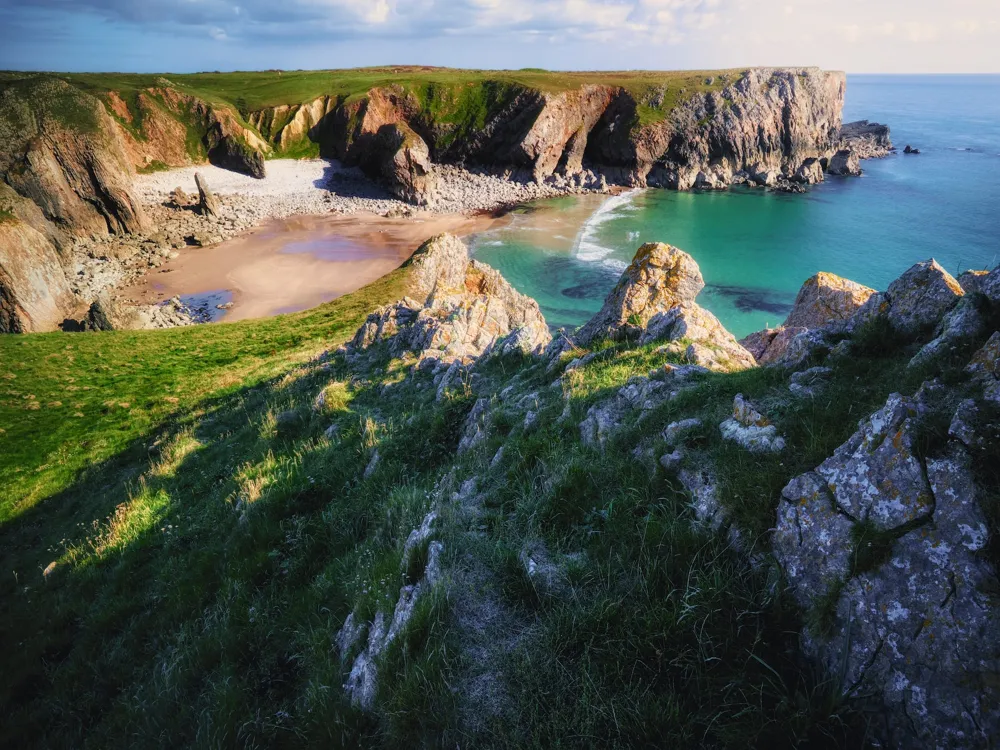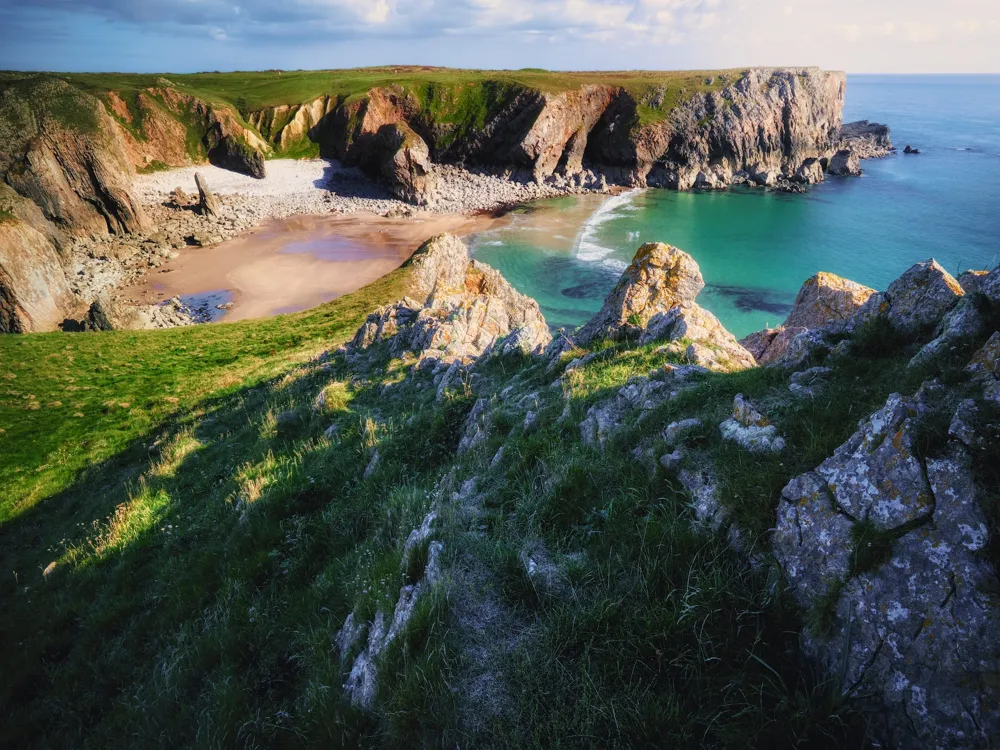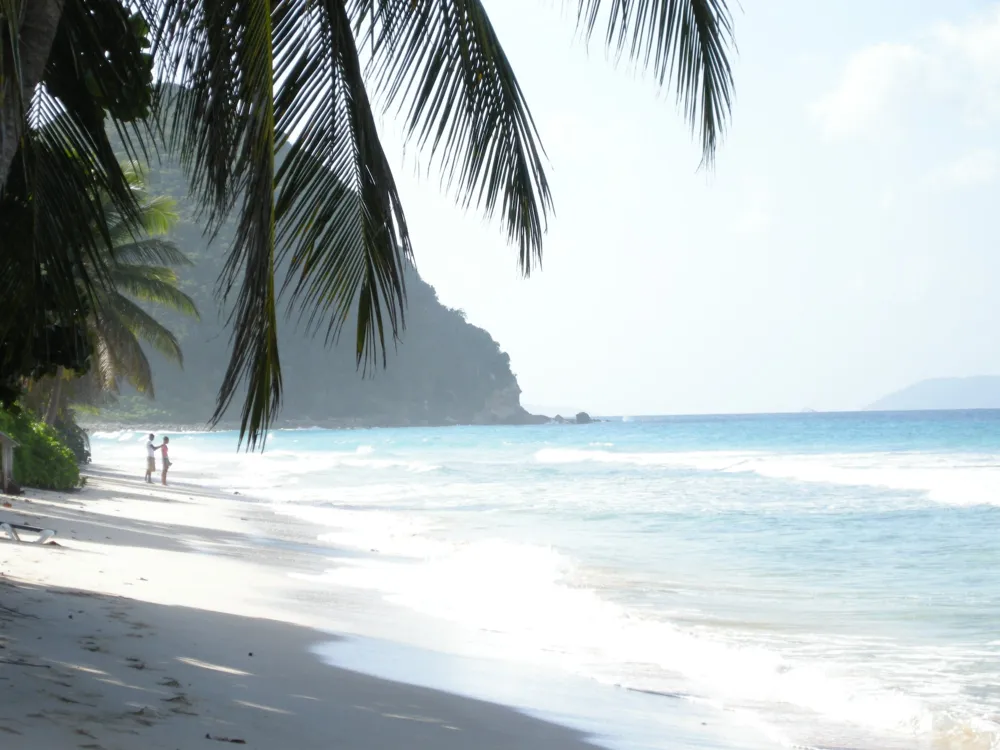Halong Bay, a magnificent natural wonder located in northeastern Vietnam, is renowned for its emerald waters and thousands of towering limestone islands topped by rainforests. The name 'Halong' translates to 'where the dragon descends into the sea', and legend has it that the islands were created by a great dragon from the mountains. As a UNESCO World Heritage Site, Halong Bay is not only a popular tourist destination but also a place of immense biological and geological significance.
The bay spans an area of around 1,553 square kilometers and is home to approximately 2,000 islets, most of which are limestone. Over millions of years, the bay has undergone various changes due to the effects of tropical wet climate, erosion, and sedimentation, resulting in a unique seascape of limestone pillars. Many of these islets are hollow, with enormous caves, while others support floating villages of fishermen. The diverse ecosystem of Halong Bay includes tropical evergreen bio-systems, oceanic and sea shore bio-systems.
Halong Bay's beauty is not just confined to its landscape; the area is also a hotspot for biodiversity, with typical eco-systems like mangrove forests, coral reefs, and tropical forests featuring thousands of animal and plant species. The bay is also historically significant, with several archaeological sites dating back tens of thousands of years, adding to its allure and mystery.
Visitors to Halong Bay are enchanted by its ethereal beauty, often compared to scenes from fantasy movies. The mystical setting of the bay, with its azure waters and limestone karsts rising from the sea, creates an otherworldly atmosphere. A visit to Halong Bay is like stepping into a different realm, where time slows down and nature’s majesty unfolds in its full glory.
The 'architecture' of Halong Bay is predominantly natural, formed over millions of years, presenting a spectacular seascape of limestone karsts and isles. These geological formations are the result of a combination of various factors like climate change, erosion, and the slow deposition of material, making the bay an open-air geological museum. Each islet and cave in Halong Bay tells a story of earth's ancient history, showcasing various forms of stalactites and stalagmites in caves like Sung Sot (Surprise), Dau Go (Wooden Stakes), and Thien Cung (Heavenly Palace).
The bay's geological value extends beyond its aesthetic appeal. It provides insights into the earth's history, including the effects of sea-level changes and the development of karstic landscapes. These limestone formations are not just visually stunning but are also significant in studying the earth’s biodiversity and the evolutionary history of the region.
The cultural architecture in Halong Bay is represented through the floating villages and homes of the local fishermen. These structures, built on floating platforms or small islands, are a testament to the adaptive lifestyle of the local communities. The architectural design of these floating homes is simple yet functional, equipped to handle the changing tides and weather conditions of the bay. This blend of natural and cultural architecture creates a harmonious existence, reflecting the co-dependency between humans and nature.
The caves of Halong Bay are also significant in terms of their archaeological value. They have been the sites of ancient human habitation, with evidence dating back thousands of years. These caves present a perfect blend of natural architecture and historical significance, offering a glimpse into the past civilizations that once thrived in this region.
The best time to visit Halong Bay is during the spring (March to May) and autumn (September to November) months. During these periods, the weather is pleasant with clear skies and moderate temperatures, ideal for cruising and exploring the islands.
When selecting a cruise, consider factors like the duration of the trip, the size of the boat, and the itineraries offered. Options range from day trips to overnight stays. Luxury cruises offer more amenities and comfort, while budget cruises are great for a more basic experience.
Essential items to pack include comfortable footwear for cave exploration, swimwear, sun protection (hat, sunglasses, sunscreen), a camera, and motion sickness medication if you are prone to seasickness. Always check the weather forecast before your trip to pack appropriately.
While visiting the local floating villages, it's important to respect the residents and their culture. Ask permission before taking photographs and consider purchasing local handicrafts to support the community.
Always prioritize safety by following the guidelines provided by your cruise operator, especially during water-based activities like kayaking or swimming. Ensure that you wear a life jacket during these activities.
Halong Bay is accessible from Hanoi, the capital city of Vietnam. The most common ways to reach Halong Bay are by road, which takes about 3-4 hours from Hanoi. Visitors can opt for bus, shuttle van, or private car transfers. Another option is to take a seaplane from Hanoi, offering a quicker and more scenic journey. For those looking for a luxurious experience, some cruises offer direct pickup from Hanoi.
Overview of Halong Bay
Architecture of Halong Bay
Tips When Visiting Halong Bay
Best Time to Visit
Choosing a Cruise
What to Pack
Respecting Local Culture
Safety Precautions
How To Reach Halong Bay
Bai Chay Bridge
Halong Bay
₹ 15,260 onwards
View halong-bay Packages
Halong-bay Travel Packages
View All Packages For Halong-bay
Top Hotel Collections for Halong-bay

Private Pool

Luxury Hotels

5-Star Hotels

Pet Friendly
Top Hotels Near Halong-bay
Other Top Ranking Places In Halong-bay
View All Places To Visit In halong-bay
View halong-bay Packages
Halong-bay Travel Packages
View All Packages For Halong-bay
Top Hotel Collections for Halong-bay

Private Pool

Luxury Hotels

5-Star Hotels

Pet Friendly






















